Bohac is one of a small percentage of artists who has the rare luxury of working on art at his leisure. His leisure, however, is not one to be taken lightly; he estimates that he created 15-18 mid-sized pieces, 165 small pieces, and participating in eight shows in 2011. 2012, though, is a new year — and with it, comes a new approach. He has taken the time thus far in 2012 to step back and reassess his work and his direction. He is learning to be more choosy and to expect more from his work, at the same time that he is reconstructing what he wants his outwards-facing image to be.
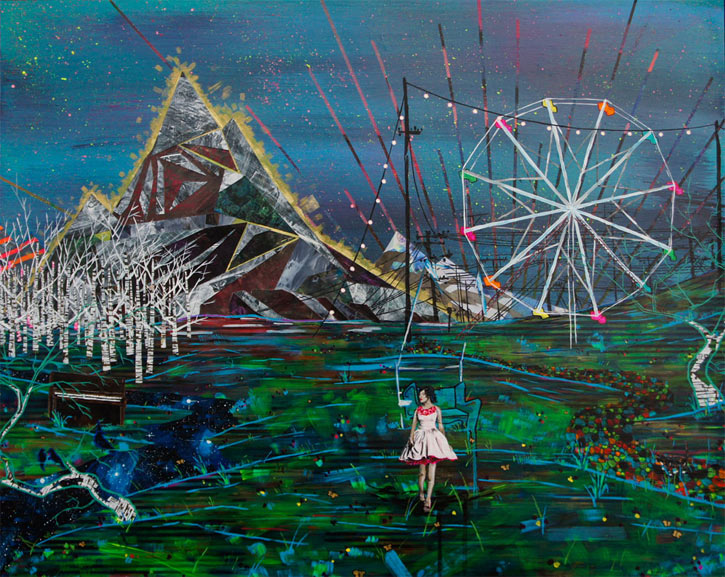
Upon first glance, Bohac’s works are complex and psychedelic in nature, full of unnatural colors and shapes. But despite how obscured, manipulated and tweaked they might be, their very cores are centered around landscapes — one interest that is deeply-rooted and enduring in Bohac’s life. After all, it is landscapes which drew Bohac from the Midwest, where he had lived his entire life, to the West Coast.
“I came out here to visit a friend who had moved out here… [and] I just was like, ‘Whoa, there’s a lot of stuff out here happening that I’ve never seen before,'” he recalls. “I’d seen mountains and I’d seen oceans, but I think everything just coalesced together in this area, and it makes these really interesting landscapes.”
To pay homage to his new surroundings, Bohac began with painstakingly rendered tempera paintings based off of photographs he had taken of the ocean. Ultimately, though, it was attending art school and taking in critiques from others that refined Bohac’s style from mere imitation to reimaginings of everyday scenery.
“I’m [was in] school, so I [had] people who [were] saying, ‘Why don’t you do this? Why don’t you do this?’ And from there, it just grew to get more tripped out and psychedelic,” Bohac remembers. “I think one of the best things anyone — any instructor — ever said of me was when I was making two or three of these collage paintings at once, and they were all at night and you could see the blue sky and the stars. He said, ‘Why don’t you make the sky this pink?’ and that’s all he had to say, and all of a sudden everything opened up a little bit more.”
Bohac has now soaked in the West Coast landscape for years, and he is hoping to forge a new winning combination out of these experiences and every technique and style he has used in the past.
“For me, [it’s now] just taking a step back and saying, ‘I’ve got a lot of stuff in this bag of tricks; what stuff do I use? What stuff do I shelf? And why?'” he explains.
INTERVIEW CONTINUED BELOW
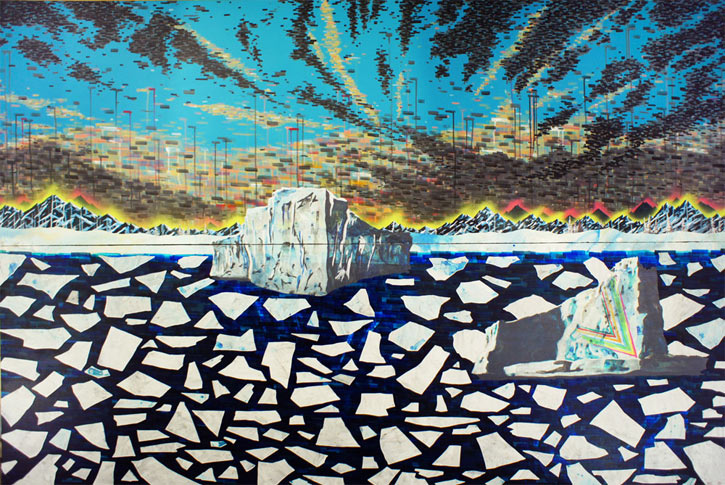
Reemerging from Bohac’s bag of tricks is everything from collage-based mixed media approaches (“I was making these paintings that were just like paintings on paper and then ripping it up and reassembling it”) to figure-drawing stints (“I’ve stayed away from any sort of figures for four or five years, and now they’re back, and they don’t always make sense.”). By drawings bits and pieces from his past, Bohac is playing an ongoing game of catch-and-release with his own artistic history. And though assessing one’s own process of reconstruction is a difficult one, Bohac has some outside perspective to point him in the right direction.
“I’ve got friends back in Omaha. They’re in a band, and they were a band ten years ago when my band was a band. And they broke up for a while because they just got sick of it; they weren’t making anything interesting,” he explains. “They broke up, went on hiatus, or whatever… [but] a couple of them kept writing riffs; they got back together, and were like, ‘Hey, that works really well with what I’ve been doing.’ They just released a new album… and it’s one of my favorite albums of the year. They took a break; they came back, they gambled, they tried something different. It’s in their favor.”
INTERVIEW CONTINUED BELOW


Hanging in Bohac’s basement studio is a large 48″x96″ canvas that spans a huge horizontal portion of the wall and almost its entire vertical height (an admittedly short vertical height, by conventional standards). There is hardly enough breathing room for one to take it all in, but the painting fits just well enough for one to gain a bit of perspective on it. The work-in-progress is a visible experiment of Bohac’s sifting and editing his artistic style. In it is a newly reintroduced focus on human figures, alongside his signature color fields of landscape. Layers of water with varying degrees of transparency set a color block in the foreground while the sky is held together by an overarching figure that Bohac lovingly admits is a Dyson Sphere.
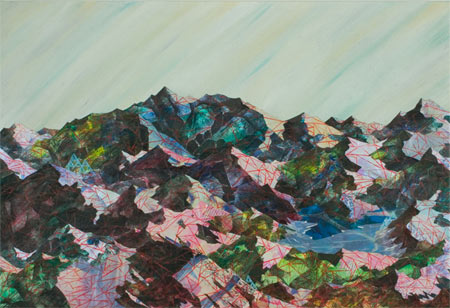
On Creating The Mandlebrot Range
“I’m a huge [Benoit] Mandlebrot fan, and it got to a point where.. [fractals were] just something I was thinking about all the time… I made [The Mandlebrot Range] while I was in Vermont… I opened up my browser or whatever, and brought up [Google Chat]. The first thing [my wife] said was, “Did you hear that Mandlebrot died? I saw it in the paper and immediately thought of you.” I started working on it and didn’t know where it was going to go.
I was reading… essentially a biography about how Pixar started out and all of the trials and tribulations. They started working for George Lucas and Steve Jobs bought their company or whatever… out of everything that they talked about, the thing that stuck with me the most was… this guy — I can’t even remember his name — they employed… came up with this idea. When you ask someone to describe the shape of the mountain, they’d say it’s a triangle — but when you look closer, that’s what a mountain is. But when you look even closer, you realize that what it is is millions of triangles. He wrote this software where he was able to render really realistic mountains, and it was the first time anyone had been able to do it, and all he did was he made a flat plane and hit so many points on that plane and told this one [to] rise up 1,500 feet. [Another] one rises up 3,000 feet, and from there, make more points out of it… what he ended up with was this leviathan that looked very much like a mountain range…
This is all collage; it’s a carbon print I made of these flocks off the coast. And then I had that first strip on, and… I had just written something down. Just make something about mountains. Just a mountain. Then underneath it, I said, “Not Bob Ross,” or something like that, but it just so happened that [Mandlebrot] passed away, and the more I thought about it and the more I thought about what I was reading… yeah.”
A Dyson Sphere, he explains with some excitement, is a sci-fi concept coined by theoretical physicist and mathematician Freeman Dyson: “[Dyson] was like, ‘Ay! Eventually we can probably build something around the entire planet and use that for communication.’ If you’ve got a whole thing acting as a satellite, you can control the weather; you can move the whole planet, if you wanted to.”
The incorporation of the Dyson Sphere hardly had thematic significance, Bohac readily admits. Rather, it spawned from a visually-driven desire. “It’s just something that is in the sky to try and play with the space — [but] people don’t need to read it that way, either…” Bohac says.
This statement, although seemingly innocuous, is rather telling of Bohac’s mentality. It reveals his scientific-leaning and curious nature, as well as his adamancy for not impressing his personal artistic interpretations upon anyone. What Bohac desires for his own work, he insists, is something that is “abstract but has a framework around it.”
“I want people to look at [my work] and say, ‘Hey, this is this, but I can interpret this however I want, and because of that, I can interpret that whole painting however I want,'” explains Bohac. “I’m not trying to hold people’s hands. I’m not trying to make titles that go and tell you a specific way to look at the painting… That’s just the way I guess I am. I would never preach anything to anyone.”
The future of Bohac’s artistic direction is “still kind of influx,” but new and exciting developments are well underway. Once all the dust has settled, it seems certain that Bohac will be standing amidst rainbow-skied canvases with a renewed belief in his work.
Ω
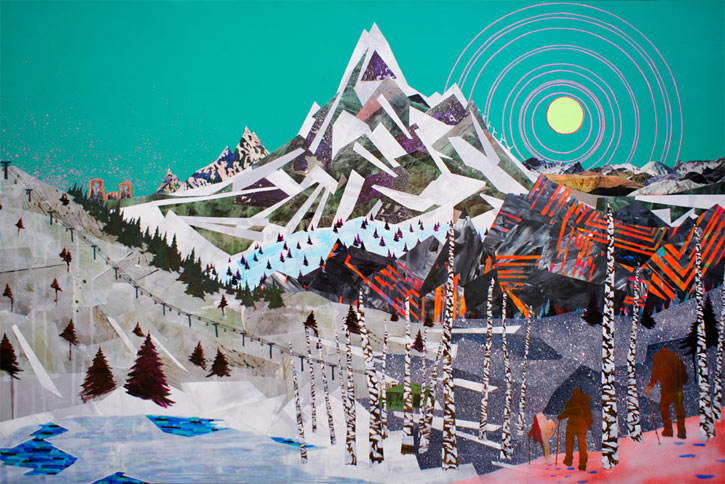
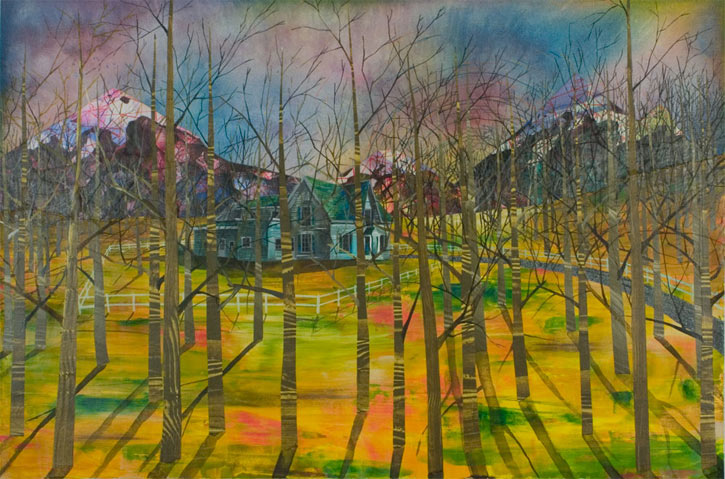

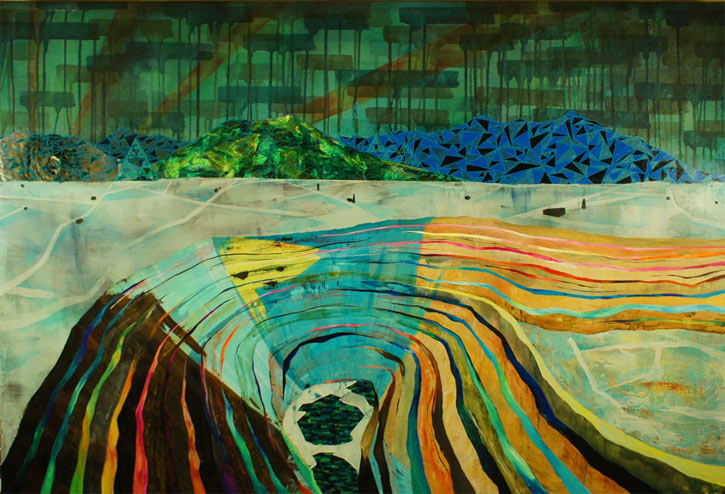





I’ve been a vicarious follower of Bohac’s work for the better part of five years, and got the chance to have a piece hanging in a gallery show he was also a part of. Way 2 b Nic!